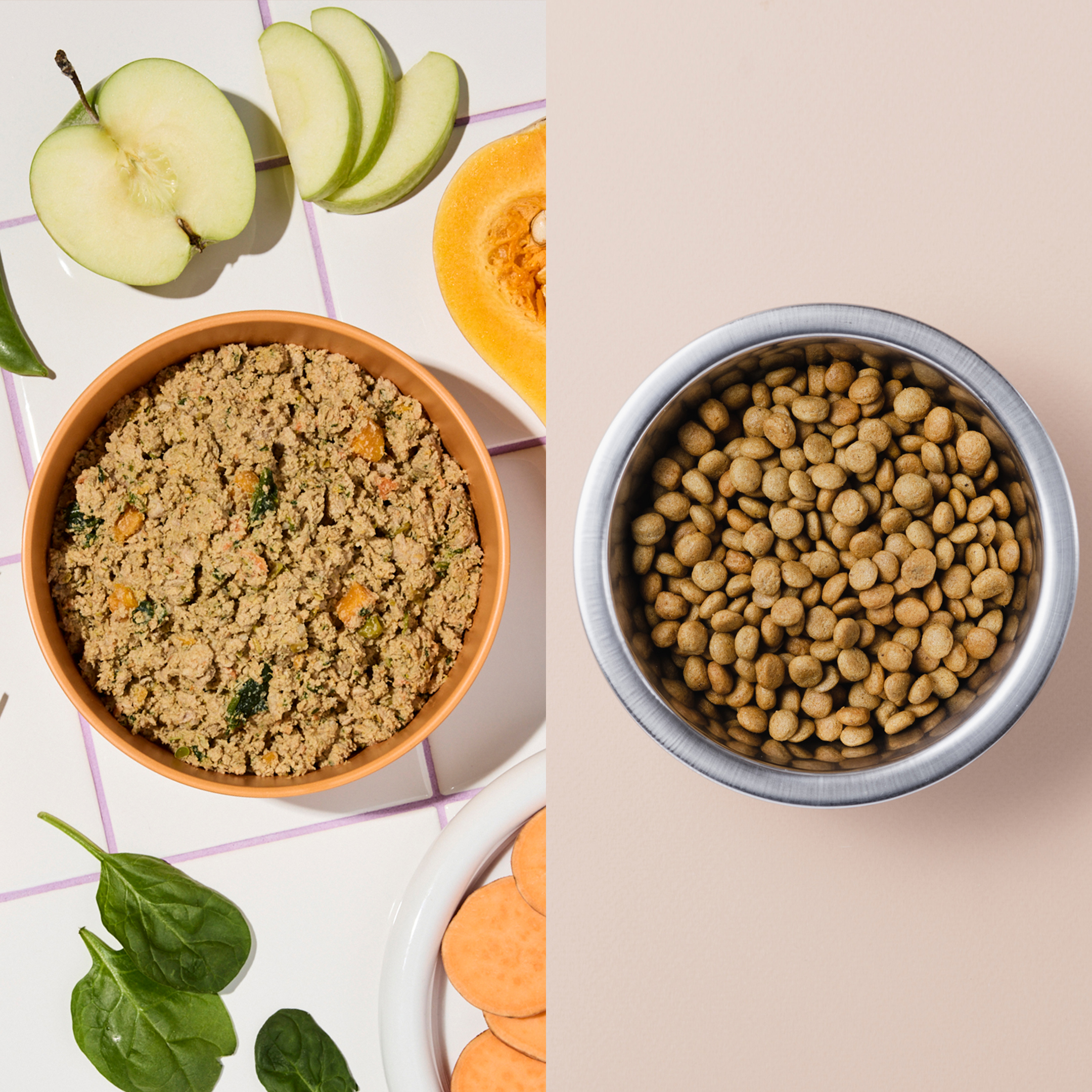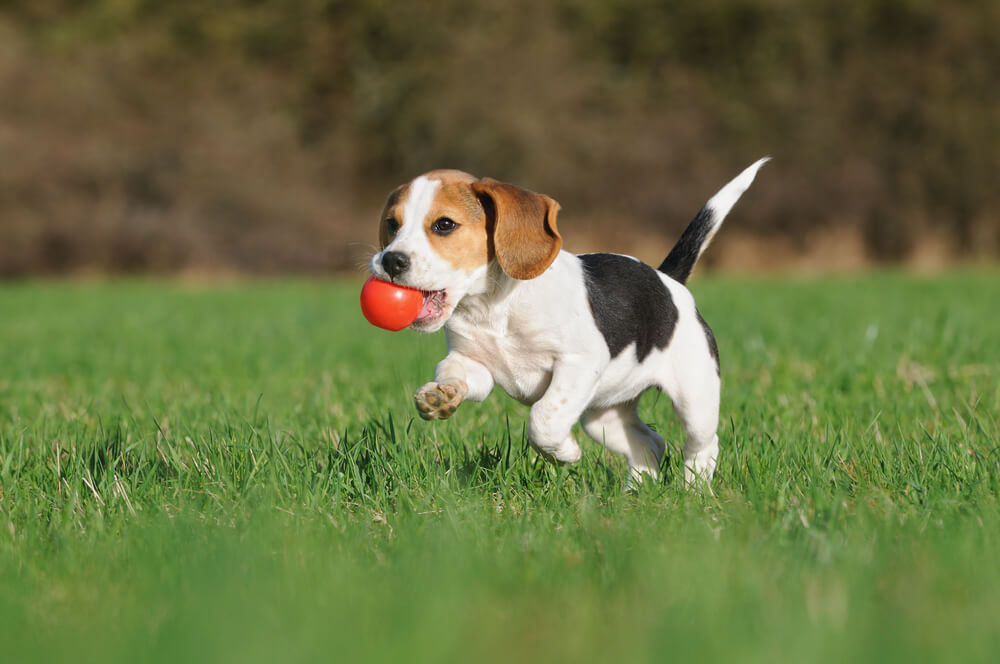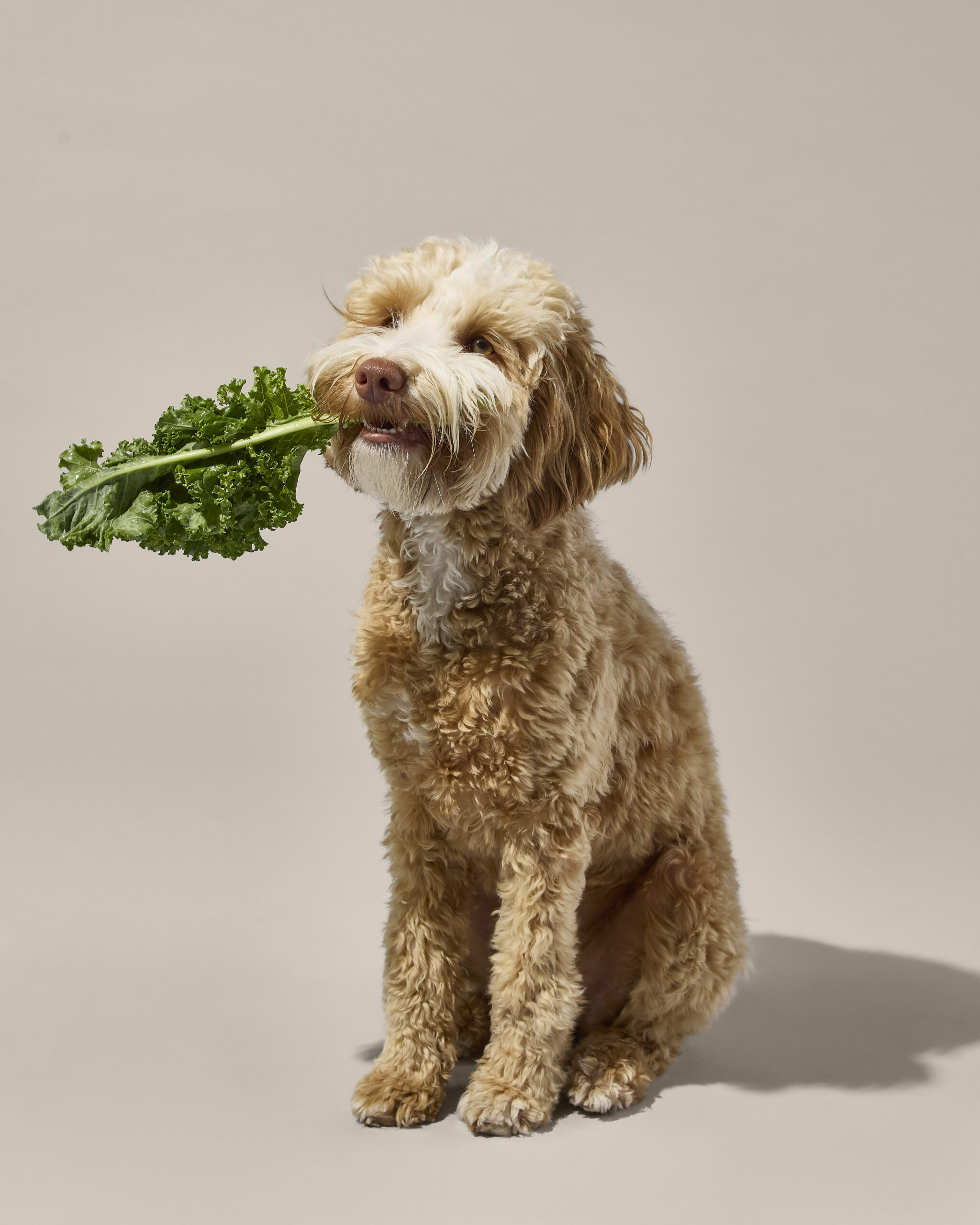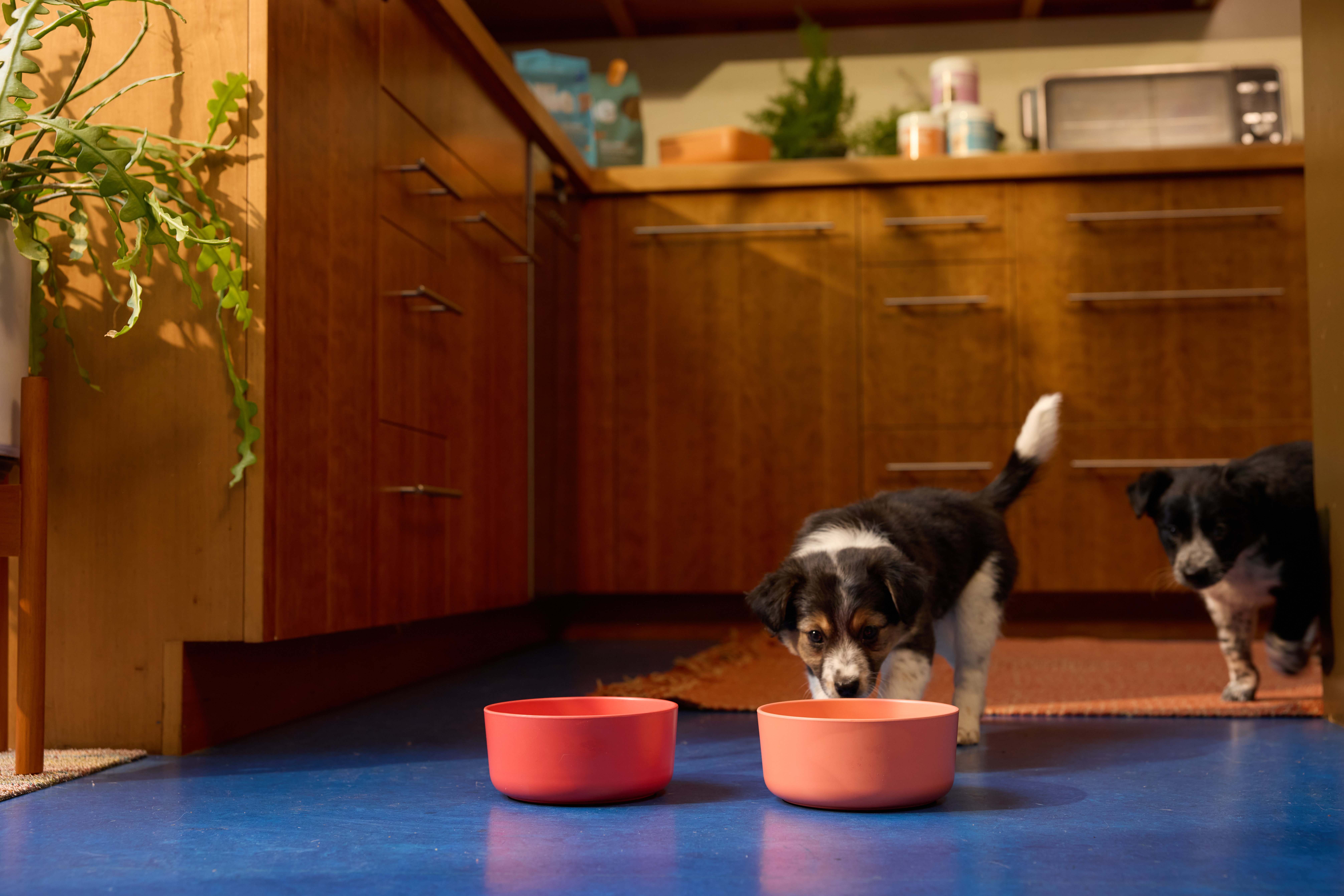Hey Ollie blog readers! We’re offering you an exclusive 60% OFF your starter box! Try now!
Every pup parent wants the best for their dog, especially when it comes to nutrition. With so many options, choosing the right food can feel overwhelming. In order to help you find the best diet for your pup’s health, energy, and longevity, we’re breaking down the evidence and comparing raw, kibble, and fresh foods.
Understanding the Main Dog Food Types
What are the key differences between raw, kibble, and fresh dog food?
Dog food options fall into three main categories:
- Kibble: Dry, extruded food that’s shelf-stable and convenient.
- Raw: Uncooked meat, bones, and sometimes vegetables, often fed as a “biologically appropriate” diet.
- Fresh: Gently cooked, minimally processed meals made with whole ingredients, often delivered as a subscription.
Each approach has passionate supporters, but the science behind them is evolving. Let’s look at what recent research reveals.
Kibble: Convenience and Consistency
How does kibble stack up for nutrition and health?
Kibble is the most common dog food, prized for its convenience and affordability. It’s formulated to meet basic nutritional standards, but the high-heat extrusion process can reduce the bioavailability of some nutrients and amino acids[1]. Recent studies show that kibble-fed dogs may have higher total serum alkaline phosphatase (ALP) activity, a marker sometimes linked to liver and bone health, compared to raw-fed dogs[1].
Key points about kibble:
- Easy to store and serve
- Consistent nutrient profile
- Lower digestibility of some amino acids compared to raw or fresh diets[2]
Raw Diets: High Protein, Higher Debate
What does science say about raw dog food?
Raw diets, often made from uncooked meats and bones, aim to mimic a dog’s ancestral diet. Advocates claim benefits like shinier coats and improved digestion. However, research shows mixed results. A 2024 study from Oklahoma State University found that dogs on raw diets had different gut microbiome populations and higher intestinal markers of inflammation compared to those on kibble[3][4][5]. Interestingly, these raw-fed dogs also had higher levels of intestinal alkaline phosphatase (IAP), an enzyme thought to protect against gut inflammation[3].
Important considerations:
- Raw diets can improve certain gut health markers, but may also increase intestinal inflammation[3][4][5]
- Higher protein and fewer plant-based carbohydrates impact the fecal microbiome[3]
- Safety concerns exist around pathogens in raw meat
Callout: Always consult your veterinarian before switching to a raw diet, especially for puppies, seniors, or pups with health conditions.
Fresh Dog Food: Science-Backed Benefits
How does fresh dog food compare to raw and kibble?
Fresh dog food, like the meals crafted by Ollie, uses gently cooked, human-grade ingredients. This approach preserves more nutrients than high-heat kibble processing and avoids the safety risks of raw meat. Studies show that fresh and raw diets outperform kibble in amino acid digestibility, meaning your pup absorbs more of the essential building blocks for muscle, immune function, and overall health[2].
Fresh food advantages:
- Higher digestibility of key nutrients[2]
- Made with whole meats, fruits, and vegetables
- Customizable for puppies, adults, and pups with sensitivities
Example: A pet parent with a new puppy chooses a fresh food subscription to support healthy growth and easy digestion.
Comparing Raw, Kibble, and Fresh: What Matters Most?
How do these diets stack up on key criteria?
Here’s a side-by-side look at the most important factors for pet parents:
| Criteria | Kibble | Raw | Fresh (e.g., Ollie) |
| Nutrient Digestibility | Lowest[2] | High[2] | Highest[2] |
| Safety | High (if stored dry) | Lower (pathogen risk) | High (cooked, human-grade) |
| Customization | Limited | Moderate | High |
| Gut Health Impact | Standard | Alters microbiome, higher IAP[3][4] | Supports healthy digestion[2] |
| Convenience | Very high | Low (prep, storage) | High (delivered, ready) |
| Price Point | Lowest | Highest | Moderate to premium |
Insight: Fresh food offers a balance of digestibility, safety, and customization, making it a strong choice for many pups—especially those with sensitive stomachs or special dietary needs.
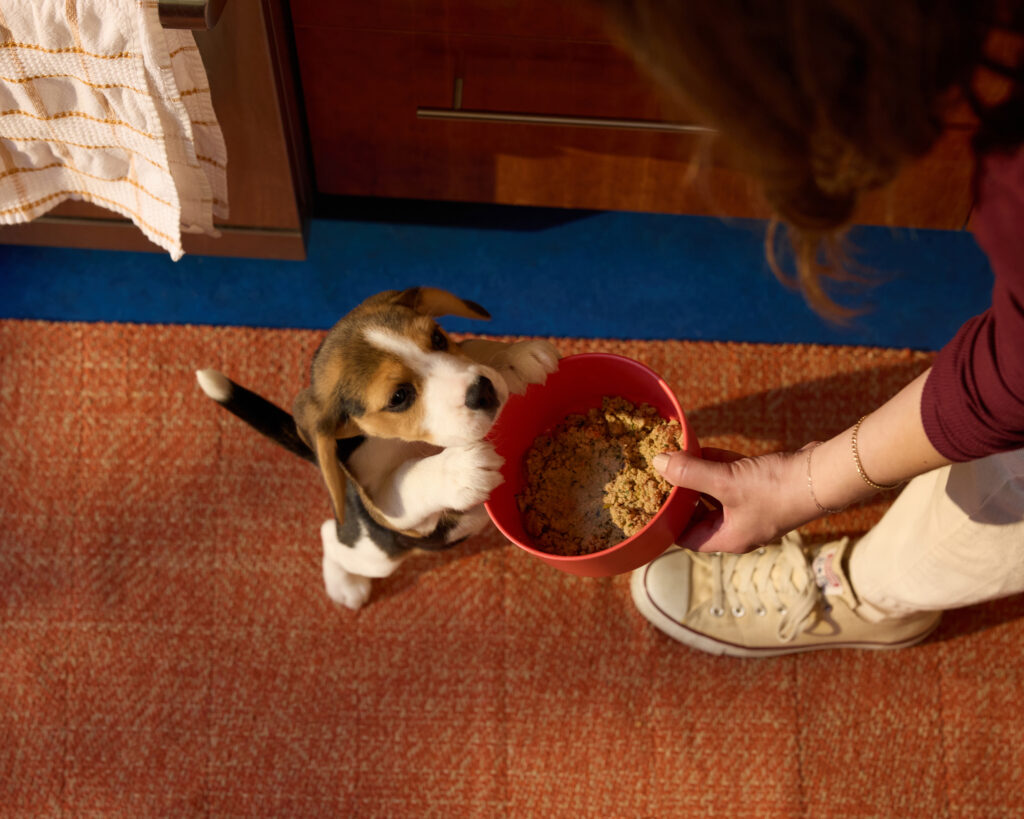
Fresh Dog Food for Puppies: Setting the Foundation
Why is fresh food a smart choice for new puppies?
Puppies need precise nutrition for healthy growth, brain development, and immune support. Fresh dog food allows for tailored portion sizes and nutrient profiles, which is especially important during the first weeks and months. Because fresh meals are made with whole, minimally processed ingredients, they’re easier for puppies to digest and absorb.
Benefits for puppies:
- Supports healthy weight gain and muscle development
- Reduces risk of digestive upset
- Can be customized for allergies or sensitivities
Step-by-step:
- Choose a fresh food plan designed for puppies.
- Gradually transition over 7-10 days to avoid stomach upset.
- Monitor your pup’s growth and adjust portions as needed.
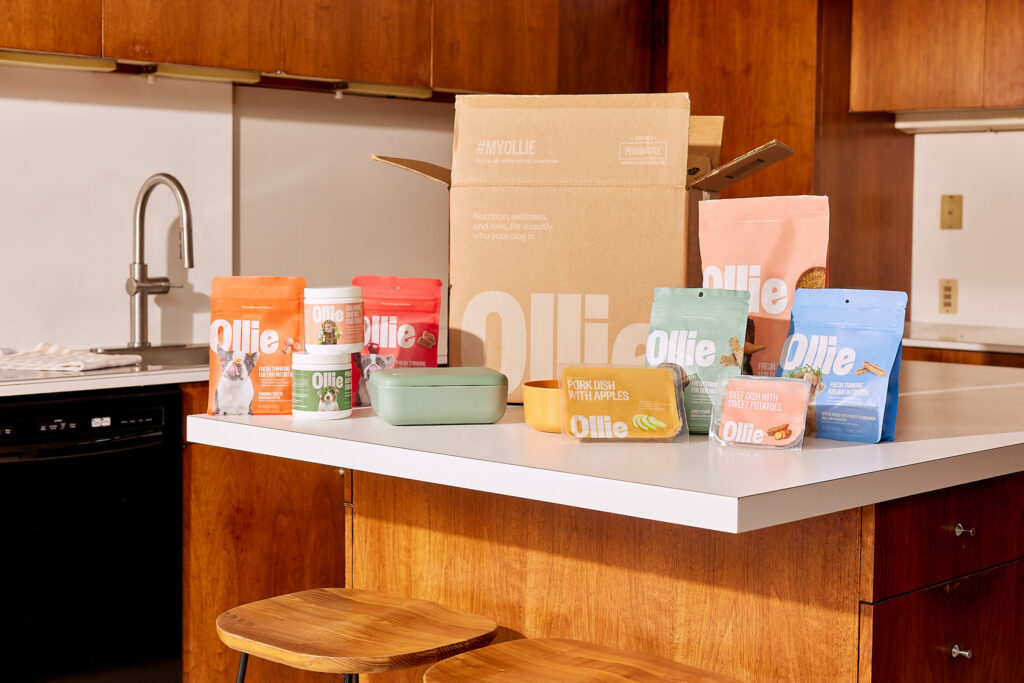
Ollie’s Approach: Personalized, Fresh, and Backed by Science
How does Ollie deliver on the promise of better dog nutrition?
At Ollie, we believe every pup deserves food that’s as nourishing as it is delicious. Our meals are formulated by veterinarians and made with human-grade meats, fruits, vegetables, and grains. We tailor each plan to your pup’s age, breed, activity level, and health needs—whether you have a growing puppy or a senior with sensitivities.
What sets Ollie apart:
- Personalized meal plans: Portion sizes and recipes matched to your pup’s unique needs.
- Human-grade ingredients: No fillers, by-products, or artificial preservatives.
- Flexible delivery: Fresh meals delivered to your door, on your schedule.
- Transparent sourcing: You know exactly what’s in your pup’s bowl.
Callout: Curious about Ollie’s pricing or how our subscription works? Visit our website for details on cost, cancellation, and current offers.
The Bottom Line: Science Supports Fresh, Personalized Nutrition
While kibble, raw, and fresh diets all have their place, fresh dog food stands out for its digestibility, safety, and ability to support gut health. Dogs who experience allergies, sensitive stomachs, or have special dietary needs may find a fresh diet especially beneficial.
Ready to see how a fresh diet can help your dog live a happier, healthier life? Explore Ollie’s fresh recipes and see the difference for yourself.
Citations
[1]https://pmc.ncbi.nlm.nih.gov/articles/PMC8174467/
[5]https://phys.org/news/2024-05-dog-kibble-raw-meat-yields.html
Tagged As:

The nutrition your dog needs,
the food they want.

Enjoying our articles? Subscribe our Newsletters and get new articles directly to your inbox
You might also like
4 August 2025
5 MINS READ
Key Ingredients in Fresh Dog Food Explained
The right food starts with the right ingredients. Unlike highly processed kibble, which can contain fillers and low-quality by-products, fresh food focuses on transparency and quality. At Ollie, w…
by Ollie Pets
4 August 2025
6 MINS READ
Fresh Dog Food Benefits for Growing Puppies
Proper nutrition as a puppy is the foundation for a long, healthy, and happy life. Fresh, human-grade meals can support your puppy’s rapid growth, brain development, and long-term health in ways…
by Ollie Pets
4 August 2025
6 MINS READ
Choosing Specialized Dog Food: Solutions for Allergies and Sensitivities
There’s nothing more difficult than seeing your dog uncomfortable. Constant scratching, upset stomachs, or chronic ear infections can be signs that something in their diet isn’t agreeing with …
by Ollie Pets
